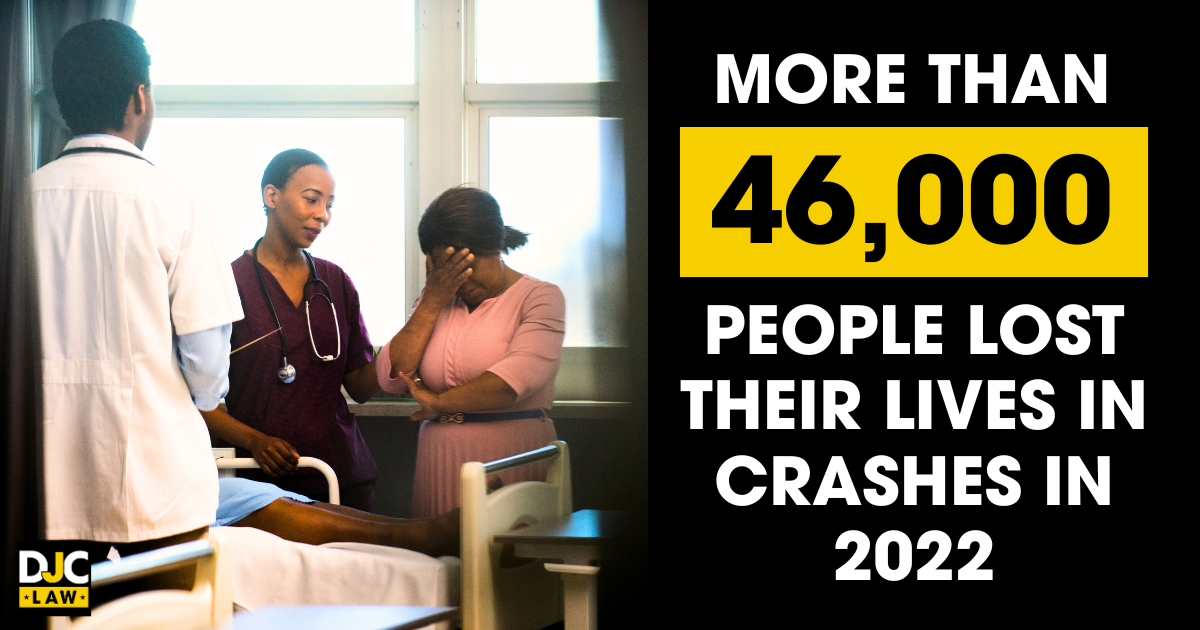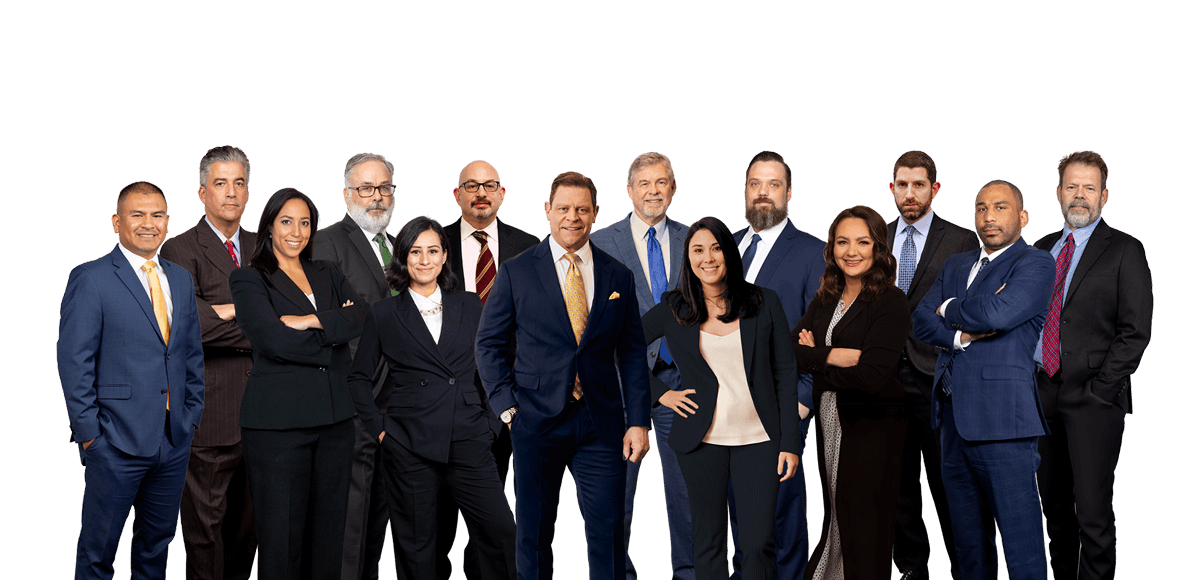
Getting injured in a car accident is a traumatic experience. Nobody can turn back the clock, but you can ensure you get the compensation you’re entitled to. And that’s where auto accident reconstruction comes into play. If you need legal guidance, an experienced Austin car accident lawyer can help you navigate your claim.
According to the U.S. Centers for Disease Control (CDC), nearly two million people suffered permanent injuries from car accidents in 2022. Accident reconstruction sheds light on what really happened and – more importantly – who was at fault.
Accident reconstruction isn’t a factor in every claim but can be the deciding factor. Here’s what you must know about the science of car accident reconstruction.
Key Takeaways
- Accident reconstruction involves recreating an accident using all available evidence to piece together what happened.
- Reconstructionists rely on standardized methodologies and evidence to determine how an accident occurred in the seconds before, during, and after impact.
- Lawyers will call upon accident reconstructionists to provide expert witness testimony to prove negligence, determine fault, and decide damages. Both defendants and plaintiffs may use them to support their cases.
- Not every case requires a reconstructionist. Typically, they’re called in to deal with cases involving serious injuries, death, disputed liability, and multi-vehicle collisions.
- Like all tools, accident reconstruction has limitations. In cases where evidence is scant or unavailable, the reconstruction process may have to rely on assumptions that can be challenged in court.
- Cutting-edge technology, including computer simulation software, aerial imaging, and 3D laser scanning, enables accident reconstructionists to formulate reliable reports and provide expert witness testimony.
- Talk to your personal injury lawyer about using vehicular accident reconstruction as part of your case. Generally, an experienced car accident attorney will advise you on whether this process is needed to strengthen your claim.
What is Accident Reconstruction?
Accident reconstruction is the scientific discipline of recreating what happened before, during, and after an accident. It helps to identify who was at fault and who was liable to pay compensation. In many cases, more than one party is to blame.
The purpose of accident reconstruction is to discover what really happened and to prevent exaggerations. Traffic accident reconstruction was formalized and standardized as a field by a 1985 grant from the National Highway Traffic Safety Administration (NHTSA) to create the Accreditation Commission for Traffic Reconstruction.
How is Car Accident Reconstruction Performed?
Experts use an array of techniques to reconstruct an accident and the events leading up to it. Every crash is unique, so experts will often use a series of methodologies related to that accident, including:
- Visual vehicle inspections
- Photographic evidence
- Skid-mark analysis
- Photogrammetry software to analyze damage
- Police traffic collision reports
- Road surface data
- Eyewitness interviews
- Computer modeling
- Crash diagrams
With more than 46,000 people dying in crashes in 2022, per the National Safety Council, it’s often these techniques that deliver justice to bereaved families. Its role is essential and ensures that the truth of how an accident happens is revealed.

The Importance of Reconstruction in Accident Cases
Car accident reconstruction is critical to successful personal injury cases. Lawyers regularly use authorized reconstructionists to support their clients in determining fault and identifying factors that could have led to the accident. It’s also an enormous factor in enhancing overall road safety nationwide.
Here’s why reconstructionists are such an essential part of supporting accident victims:
- Determining Fault – A better understanding of accidents helps assign fault and reveal insights about what each driver did and whether their actions/inactions qualify or contribute to negligence.
- Support Legal Claims – Offering clear evidence of negligence supports your legal claim. It can demolish the arguments of insurers and uncover outright lies and misrepresentations made against plaintiffs.
- Identify Factors – Accident reconstruction may shed light on contributing factors beyond driver actions, including road conditions and vehicle defects. It ensures every angle of an accident has been considered.
- Improve Safety – Municipalities across the nation regularly use the work of reconstructionists to improve road safety measures and make future vehicle designs safer.
- Prepare for Trial – Did you know that reconstructionists can also serve as expert witnesses? They can explain their findings as part of court trials to enhance your chances of getting the correct verdict.
When Do You Need Motor Vehicle Accident Reconstruction?
Accident reconstruction isn’t a factor in every case, especially if liability is apparent and injuries are minimal. Generally, accident reconstruction becomes worthwhile when complex accidents and serious injuries are involved.
Your personal injury lawyer will advise when they believe a reconstruction analysis is appropriate. Situations where they come into play include accidents involving:
- Serious injuries
- Disputed liability
- Multi-vehicle collisions
- Inaccurate police reports
Consumer Shield reports that nearly six million accidents occurred in 2022, but the majority wouldn’t have required a formal collision analysis. Instead, defer to your attorney, who can advise whether it’s time to bring in an expert.
When Will an Accident Reconstructionist Be Part of My Case?
Accident reconstructionists aren’t required for every case. They’re there to provide an expert opinion of crashes when liability is disputed, and both sides have conflicting statements. It’s their job to find out the facts by using a recognized scientific discipline.
The role of the reconstructionist means their science-backed opinions are well-respected in courtrooms and are often the crucial factor in swinging a jury your way. In some cases, your car accident attorney might recommend hiring one from the beginning if they anticipate potential conflict over what happened.
In some cases, liability may have been established, but there are disputes over the settlement. Enlisting a reconstruction professional can show how the accident caused injuries and losses, strengthening a claim for a specific dollar amount.
Key Components of Accident Reconstruction
Every accident is unique, but accident reconstructionists use their professional knowledge and standardized processes to build an evidence-based picture of what happened. In short, the job of the accident reconstructionist is to explore every avenue for evidence to build a picture of what happened.
Here’s a rundown of the three core components of the accident reconstruction process:
Data Collection: Gathering Essential Evidence
Initially, an accident reconstructionist will spend their time gathering evidence. Much of their time will be spent analyzing physical evidence from the scene and poring over the evidence your lawyer has already collected, such as surveillance camera footage, eyewitness statements, and police reports.
Scene Analysis: Understanding the Accident Environment
The next step is to analyze the overall scene to uncover factors that might have led to your accident. For example, they’ll focus on factors like the weather, road layout, traffic flow, and road conditions at the time of the accident.
Understanding the scene is critical because so many accidents happen simply because of the conditions. According to the U.S. Department of Transportation, nearly 21% of all accidents are caused wholly or partially because of the weather.

Vehicle Dynamics: How Vehicles Behave During Collisions
Investigating vehicle dynamics provides a better understanding of force, motion, and damage during and after the crash. Vehicle dynamics explores issues like braking, steering, speed, acceleration, and collision forces.
Mapping out vehicle dynamics allows reconstructionists to match physical damage to each vehicle’s trajectory during and after impact.
The Role of Accident Deconstructionists
Accident deconstructionists are the opposite of reconstructionists. Instead of reconstructing an accident, they analyze the findings of other professionals, interpreting and challenging data, assumptions, and methodologies employed. They’re there to provide alternate theories and uncover evidence that might have been overlooked.
Qualifications and Expertise Required
Deconstructionists rely on the same science-backed techniques as reconstructionists. Like the latter, they often have science backgrounds, with a focus on disciplines like physics and engineering.
Since they’re often challenging reconstructionists, it’s not uncommon for deconstructionists to have previously worked as reconstructionists. This extensive experience gives them unrivaled insights into the processes used to reconstruct a car crash.
Tools and Technology Used in Reconstruction
Accident reconstruction/deconstruction has come a long way since 1985. These professionals approach every accident with a forensic mindset, using cutting-edge technology, including artificial intelligence (AI).
Some examples of the tools they might use include:
- 3D laser scanners
- Drones
- Event Data Recorder (EDR) readers
- Simulation software
- Forensic analysis equipment
- Mathematical models
Common Scenarios Requiring Expert Testimony
Accident deconstructionists are expert witnesses and are often deployed by the defense as a reaction to the findings of a reconstructionist. As such, they’re usually used in the same situations as a reconstructionist, such as crashes with serious injuries and disputed liability.
Like reconstructionists, you might find a deconstructionist working on civil litigation, insurance claims, and criminal cases.
The Reconstruction Process Explained
Accident reconstruction relies on a systemic approach for uncovering evidence and putting it together to recreate the story of your accident. On average, the CDC estimates accidents cost around $340 billion every year, and reconstructionists ensure you’re not left out of pocket.
We’ll run through the reconstruction process to show you what happens if your personal injury attorney decides it’s worth hiring one of these experts for your case.
Initial Assessment
All reconstructions begin with an initial assessment. It’s about collecting preliminary information to understand an accident. Typically, this means your lawyer will provide access to all available evidence they’ve gathered so far, including:
- Accident scene photos/videos
- Official police accident reports
- Weather conditions
- Road conditions
- Dashcam footage
Investigate the Accident Scene
The next step is to understand more about where the accident happened. Depending on the scenario, they might inspect the roadway for defects, look for any obstructions, and examine the debris.
Sometimes, reconstructionists might fly a drone to get an overhead view that offers more context for your crash.
Vehicle Examination
Next, reconstructionists will examine all vehicles involved, whether those are cars, heavy trucks, motorbikes, or commercial vehicles. It’s why, in major accidents, vehicles aren’t taken to a garage and repaired straight away, as this would eliminate vital evidence.
It will involve a damage analysis, a full inspection of the vehicles’ mechanical elements, and an analysis of any EDRs or a vehicle’s black box.
Reconstruction Software
Today, reconstructionists don’t make educated guesses on what happened. They rely on specialized software to build simulations and accident models. These state-of-the-art tools are capable of analyzing everything from vehicle force to trajectories. The results of these tools can validate or disprove arguments about what happened.
Data Interpretation
These professionals often have engineering, physics, and forensics backgrounds because of how critical this knowledge is in this line of work. They’ll interpret the data they have and the results of their simulations to create detailed accident reports.
Information contained within these reports includes:
- Accident timelines
- Impact analysis
- Contributing factors
The report will also provide the author’s views on the cause of the accident and the most likely sequence of events.
Legal Considerations in Accident Reconstruction
Accident reconstruction is a pillar of the legal process, whether in or out of court. Scientific evidence and an accident reconstruction expert who can provide witness testimony offer clarification around disputed aspects of an accident and who might be liable.
How Reconstruction Affects Liability Determination
Deciding who was at fault for an accident is the primary reason why reconstructionists are hired as part of accident-related lawsuits. Not only can they determine who’s at fault, but to what degree a particular party might be at fault.
Some of the factors they’ll account for in deciding who’s ultimately to blame include:
- Driver behavior
- Product liability
- Vehicle conditions
- Roadway conditions
In some cases, their findings might also bring new parties into the action. For example, a personal injury lawsuit against another driver believed to be at fault might be expanded if a reconstructionist discovered a mechanical failure or a poorly maintained road contributed.
The Role of Reconstruction in Court Proceedings
Alongside crafting reports, reconstructionists serve as expert witnesses in the courtroom. Although the U.S. Bureau of Justice Statistics states that just 5% of cases go to trial, this highlights the role of the reconstructionist in some of the most high-profile cases in the country.
However, reconstructionists will spend time working closely with your attorney to prepare your case before it goes to trial. If a reconstructionist is asked to testify, they’ll present their findings, including through visual aids. They may also be required to submit to cross-examination, where they’re grilled on their findings.
Despite this, reconstructionists are expected to be neutral and unbiased, even though they work for one side.
Challenges and Limitations in Accident Reconstruction
Accident reconstruction is a science, but it isn’t perfect. Like all scientific disciplines, the quality of a reconstruction is determined by the quality of the data available, the tools used by a reconstructionist, and their personal proficiency.
Since many reconstructions are open to interpretation, multiple reconstructionists could arrive at entirely different conclusions. So, let’s go into some of the common pitfalls of accident reconstruction and some of the techniques used to overcome them.
Common Pitfalls in Data Collection and Interpretation
Successful collision reconstruction relies on collecting high-quality evidence and delivering an objective crash analysis. Typically, problems start and end with data collection and interpretation issues.
Examples of typical data collection issues include:
- Delays in the evidence-gathering process.
- Degraded/lost evidence.
- Incomplete documentation of the original accident scene.
- Overlooked external factors, like weather, lighting, and road conditions.
- Inaccurate eyewitness statements.
Even with high-quality evidence, problems with the interpretation may come into play. Some of these interpretation issues are entirely unintentional, which is why second opinions are often needed.
Examples of common interpretation problems include:
- Unintentional confirmation bias.
- Making incorrect assumptions.
- Incorrect use of simulation software.
- Poor technological input values.
Dealing With Incomplete or Contradictory Evidence
Reconstructionists can only work using the evidence they’ve got available to them. If a piece of evidence has gone missing or the available data conflicts, it adds an element of uncertainty to the process that causes issues with the final conclusions.
Experienced accident reconstruction professionals can choose from a range of strategies to overcome these problems. Here’s how a reconstructionist might deal with the issue:
- Multiple Scenario Analysis – A reconstructionist might acknowledge that several accident scenarios could have happened. Rather than settling on a single conclusion, they’ll offer various outcomes with likelihood values attached.
- Similar Data – If critical data can’t be found, experts might use similar accident data to fill in the gaps. For example, they might use registered manufacturer crash test reports or overarching industry studies.
- Forensic Analysis – Relying on forensics provides a roundabout way of uncovering other evidence. For example, if it’s impossible to determine the speed at which a vehicle is going, analysis of tire marks, skid marks, and damage patterns can provide an indirect answer.
- Probabilities – Minimal data may mean reconstructionists are forced to resort to probabilities. These models use other data, like driver behavior and vehicle trajectories, to arrive at an answer.
- Data Cross-Referencing – Data may also be used to deal with contradicting theories. For example, physical evidence like damage patterns and skid marks can disprove a witness statement.
In some cases, reconstructionists may resort to a “best guess” option where evidence is extremely limited.
For example, suppose there’s a crash on a country road with no dashcam footage, no eyewitnesses, and in poor weather, where vital evidence has been washed away. In that case, reconstructionists will naturally have more assumptions than a crash in the middle of a downtown metro area at rush hour.
Future Trends in Auto Accident Reconstruction
Auto accident reconstruction has come on leaps and bounds over the last few decades. In the past, accident reconstruction relied on manual calculations, sketches, and diagrams. There was also a huge emphasis placed on eyewitness accounts.
Technological limitations meant that the value of accident reconstruction was often limited because of the potential for error involved. For example, eyewitness credibility, the manual skill of the reconstructionist, and the assumptions made could be heavily questioned.
Today, the industry is heavily reliant on technology, which has helped to reduce the number of assumptions made and mitigated how much a reconstructionist’s findings can be legitimately questioned. So, how is technology changing the future of auto crash reconstruction?
Computer-Aided Design (CAD) and Simulation Software
CAD and simulation software has been a revelation. Being able to use a combination of 3D modeling and animation software allows a complete representation of an accident scene, including recreations.
Some of the most popular software options include PC-Crash, AutoCAD, and Virtual Crash. Additionally, all of these options allow their simulations to be adjusted to see what would happen with other values inputted.
EDRs (The Black Box)
Most modern cars are manufactured with EDRs included. These are the black boxes of road vehicles and capture various pieces of electronic data that can be retrieved with the vehicle later. Some of the data contained in these recorders include:
- Speed
- Seatbelt usage
- Airbag deployment
- Braking
The black box has been instrumental in helping these professionals acquire objective evidence to challenge accounts from accident victims and eyewitnesses.
Aerial Imaging
Drone technology enables high-resolution aerial imaging. It’s changed how accident scenes are analyzed because, for the first time, reconstructionists have a reliable way of getting a bird’s eye view of what’s happening.
However, beyond pictures, drones contribute to 3D mapping by flying over the scene of a crash and taking images from multiple angles. These images can then be used to generate accurate 3D models for further analysis.
3D Laser Scanning
3D laser scanning is another modeling tool that has been a game-changer for the industry. This technique relies on lasers to scan the scene to create an even more intricate 3D representation. Crucially, it captures the tiny details that might have otherwise been missed, such as slight road surface changes.
Plus, the advantage of 3D laser scanning is it allows these models to be created much faster, preserving essential evidence.
AI and Machine Learning
The emergence of AI and machine learning has already impacted practically every industry. Accident reconstruction is no different.
Some of the most advanced systems have enabled automated reconstruction to create preliminary reconstructions, drastically decreasing the time it takes to reconstruct a crash. Likewise, AI can be deployed to use predictive analytics using previous accident data to arrive at the most likely cause of a crash.
Legal Considerations in Accident Reconstruction
Accident reconstruction is often the defining factor in determining liability in various legal scenarios. Their conclusions factor into how evidence might be presented and evaluated to decide who’s ultimately responsible for an accident.
How Reconstruction Affects Liability Determination
Personal injury lawyers decide when and how to deploy accident reconstruction based on the intricacies of your case. The point is to provide evidence-based insights from an objective source to shape the legal narrative.
Here are three scenarios where liability determination from a reconstructionist comes into play.
Negligence Claims – Establishing Fault Based on Driver Actions
During negligence claims, the purpose is to prove that the other driver was at fault. Accident reconstructionists can demonstrate that one party breached their duty of care by showing that the driver was speeding, failed to yield, or was driving while distracted. They might rely on evidence like impact angles or vehicular damage patterns as part of their expert testimony.
Comparative Fault Arguments – Determining Shared Responsibility
In comparative negligence states, an accident reconstruction could mean the difference between receiving compensation or getting nothing. Showing divided liability could enable you to receive compensation even if you were partially blamed for the accident.
For example, a reconstructionist might focus on primary and secondary contributors to the accident. Moreover, their testimony could refute exaggerated claims of fault by one party.
Insurance Settlements – Quantifying Damages Using Factual Evidence
Reconstructionists may be involved in negotiations with auto insurance companies outside the courtroom. They might be called in to prove a damage assessment or use objective data to help calculate payouts, and thus connecting a reconstruction with injuries present in medical records.
Since insurers will do everything in their power to avoid paying out, the evidence presented by a reconstructionist can help overcome liability issues and the actual value of damages.
How Our Law Firm Handles Accident Reconstruction
Auto insurers and defendants in personal injury lawsuits often hire teams of reconstructionists to assess your accident. Ultimately, the point is to protect their bottom lines by reducing settlement sizes and disputing liability. With so much at stake, it’s critical that you have both legal guidance and leading experts on your side.
Our law firm possesses years of experience in handling complex accident claims, having worked with some of the most skilled accident reconstructionists in the business. As part of our aggressive approach to winning car accident claims on behalf of our clients, we have long-running relationships with reconstructionists who can help you win your case through their accident reconstruction services.
If you’re in need of a law firm that’s capable of handling every aspect of your case, get in touch with us today.
Auto Accident Reconstruction FAQs
How hard is crash reconstruction?
Crash reconstruction is one of the most complex aspects of any car accident claim. It’s a painstaking process requiring highly trained professionals with the skills, experience, and intuition to create a realistic and factual accident reconstruction. In many cases, crash reconstruction is the deciding factor in both insurance claims and personal injury lawsuits.
Who performs an accident reconstruction?
Accident reconstructionists are trained and credentialed professionals. Many reconstructionists have backgrounds in fields like physics, engineering, forensics, and law enforcement. The legal trade recognizes them as experts, enabling them to provide expert witness testimony during trials.
How can accident reconstruction be used in a legal case?
The results of an in-depth accident investigation and crash reconstruction are formal pieces of evidence that can support claims of negligence. They can establish fault, even if only partial, and determine the severity of damages, including injuries and property damage.



